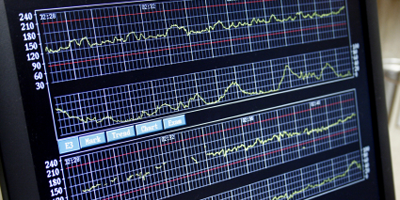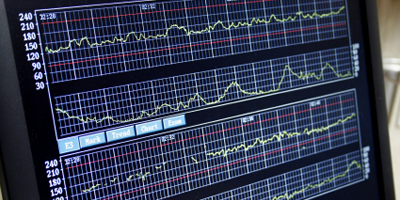Birth Rhythms
An irregular heartbeat, a condition known as arrhythmia, can be life threatening. That said, the mechanism that expands and contracts the heart is reasonably well understood; a specialized group of cells acts as a biological pacemaker. Rhythm is crucial to many biological processes, and researchers are intrigued, in particular, by how spatially distributed oscillators are synchronized in organs that do not have a discernible pacemaker.
In their paper in Physical Review Letters, Rajeev Singh at the Institute of Mathematical Sciences in Chennai, India, and his coauthors model contractions that occur in the uterus during pregnancy. Oscillations in the uterus (contractions) differ from those in the heart (heartbeats); the former occur for a short time during the last stage of pregnancy and are apparently not coordinated by pacemaker cells. Any study leading to a better understanding of the mechanical behavior of the uterus during pregnancy would be useful; in the US, of pregnancies end with contractions that come too early, a leading cause of premature births.
Studies have shown that a cell does not spontaneously oscillate. Moreover, a mechanism must couple cells that oscillate in phase. The authors model such a mechanism with a lattice of excitable muscle cells, each of which is coupled to several electrically passive cells. The dynamical behavior changes with increasing coupling strength; clusters of oscillating cells form at intermediate coupling, which are globally synchronized at strong coupling. The model allows the authors to make specific, presumably testable, predictions on the collective behavior of uterine cells during late stages of pregnancy. – Sami Mitra





